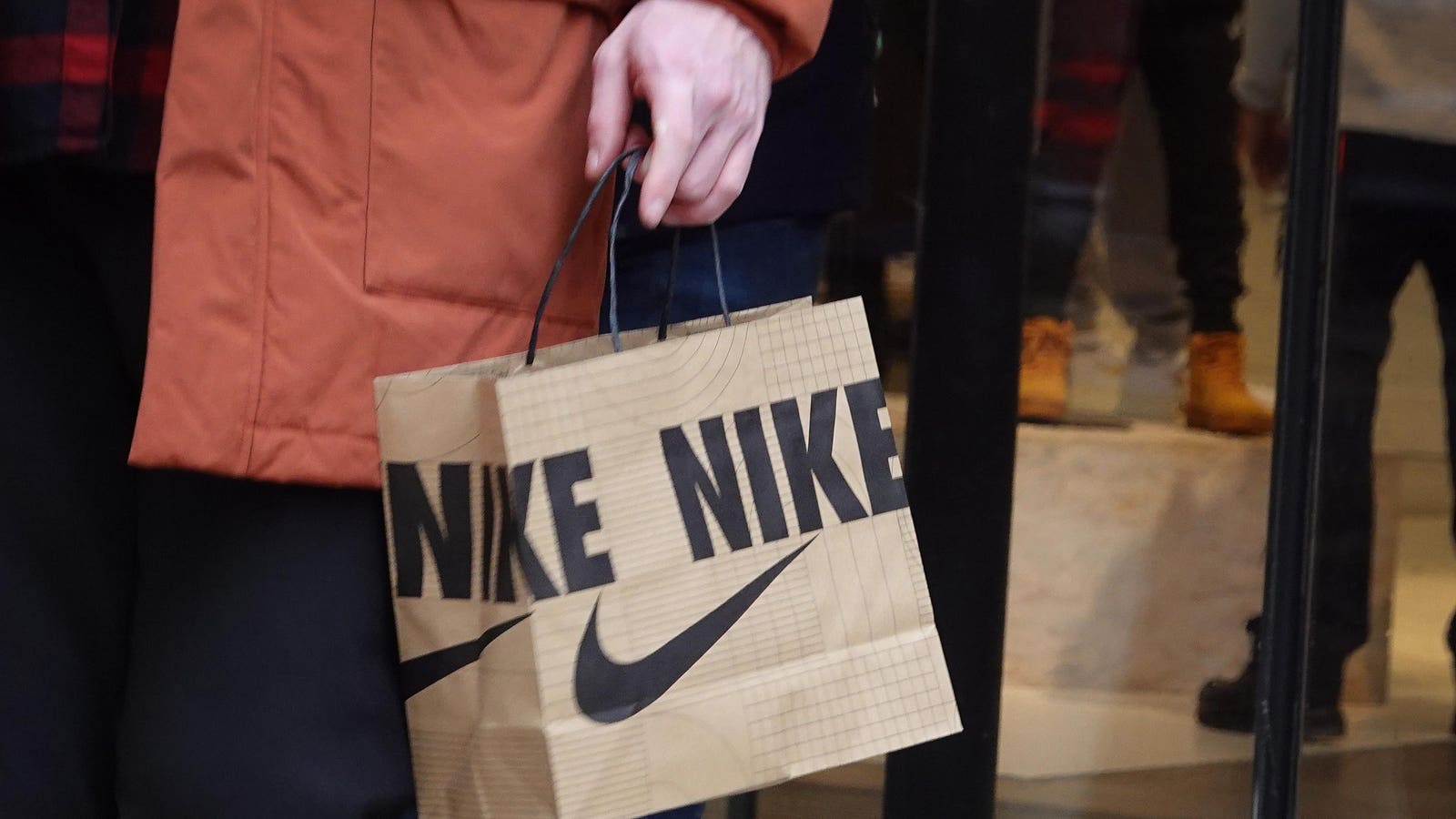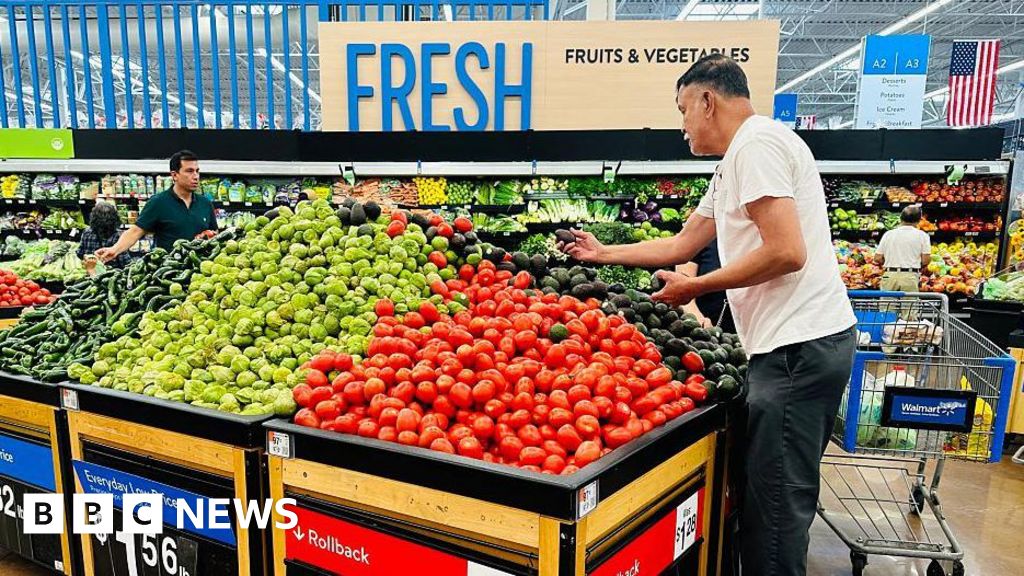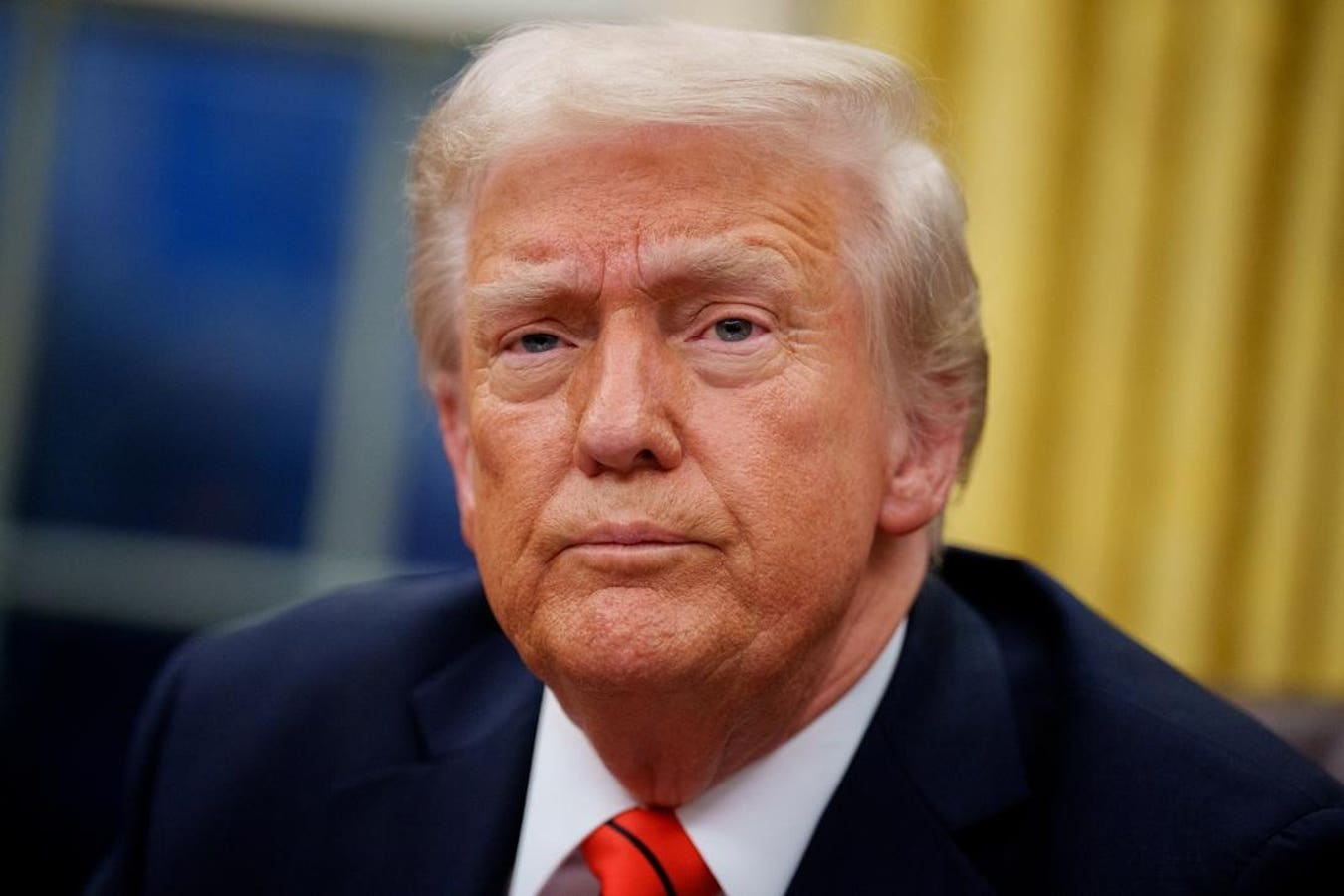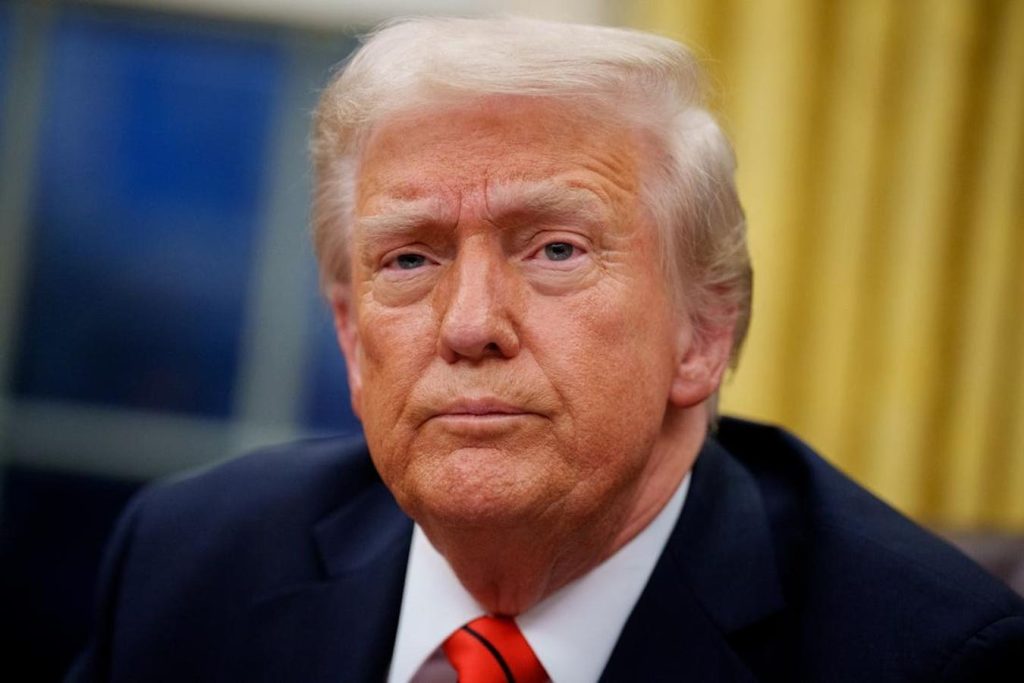Topline
U.S. retail stocks reliant on overseas manufacturing—including Nike and Lululemon— slid Thursday morning after President Donald Trump announced sweeping tariffs on imports from most countries, with investors expecting a jump in consumer prices and as recession warnings mount.
CHICAGO, ILLINOIS – DECEMBER 21: A shopper leaves a Nike store along the Magnificent Mile shopping … More district with a purchase on December 21, 2022 in Chicago, Illinois. Nike’s stock price jumped more than 10 percent today after the sportswear maker announced earnings far exceeding expectations. (Photo by Scott Olson/Getty Images)
Key Facts
Nike’s stock fell nearly 12% to $57.35 in Thursday morning trading, while Target shares were down 11% to $94.27 and Amazon was down nearly 8% to $180.56 Thursday morning.
Companies with smaller market capitalizations were also impacted by the investor reaction to tariffs: discount chain Five Below dropped 27%, home goods seller Wayfair was down 24% and shoe brand Deckers, which makes Hokas and Uggs, fell 16% (each of these brands rely on production facilities in countries like China, Vietnam, Indonesia and Taiwan).
“Companies that rely heavily on imported goods from Southeast Asian countries that were slapped with higher than expected tariffs took an especially large hit in the after-hours trading,” said Tom Lauricella, chief markets editor at Morningstar.
Trump announced Wednesday a discounted reciprocal tariff of 34% on Chinese goods (on top of existing tariffs, bringing the actual rate to 54%), 46% on Vietnam and 32% on Taiwan; China accounts for a 13.4% share of U.S. imports, while Vietnam and Taiwan account for 4.2% and 3.6%, respectively.
The S&P 500 dropped 4%, the Dow Jones Industrial Average fell 3% and the tech-heavy Nasdaq was down 5%.
Contra
Walmart and Costco are among the retailers expected to be shielded from the brunt of new U.S. tariffs because they are consumable-oriented, Morgan Stanley analysts said. Walmart shares were down just 1.59% and Costco was up 0.77% right after market open. Still, “tariffs came in worse than expected and weighed more heavily on stocks with higher Vietnam sourcing exposure,” the analysts said in a Thursday morning consumer retail report.
Key Background
Trump levied “reciprocal tariffs” on more than 180 countries Wednesday. Most countries were hit with a 10% tariff on imported goods, but those that Trump deemed the “worst offenders” have an even higher rate. The numbers are based on a calculation that takes the U.S. trade deficit with a particular country and dividing it by the total goods imports from that country, then dividing that number by two, according to reports breaking down a formula provided by the White House. A 25% tariff on all imported autos went into effect at midnight.
This is a developing story and will be updated.
Further Reading
Trump’s Tariffs Tip Economy ‘Perilously Close’ To A Recession, Largest U.S. Bank Warns (Forbes)
Here’s The Full List Of Trump’s Reciprocal Tariffs Announced Wednesday (Forbes)
Apple Leads Premarket Slide In Tech Stocks As Trump’s Reciprocal Tariffs Trigger Global Selloff (Forbes)
Report the details…











